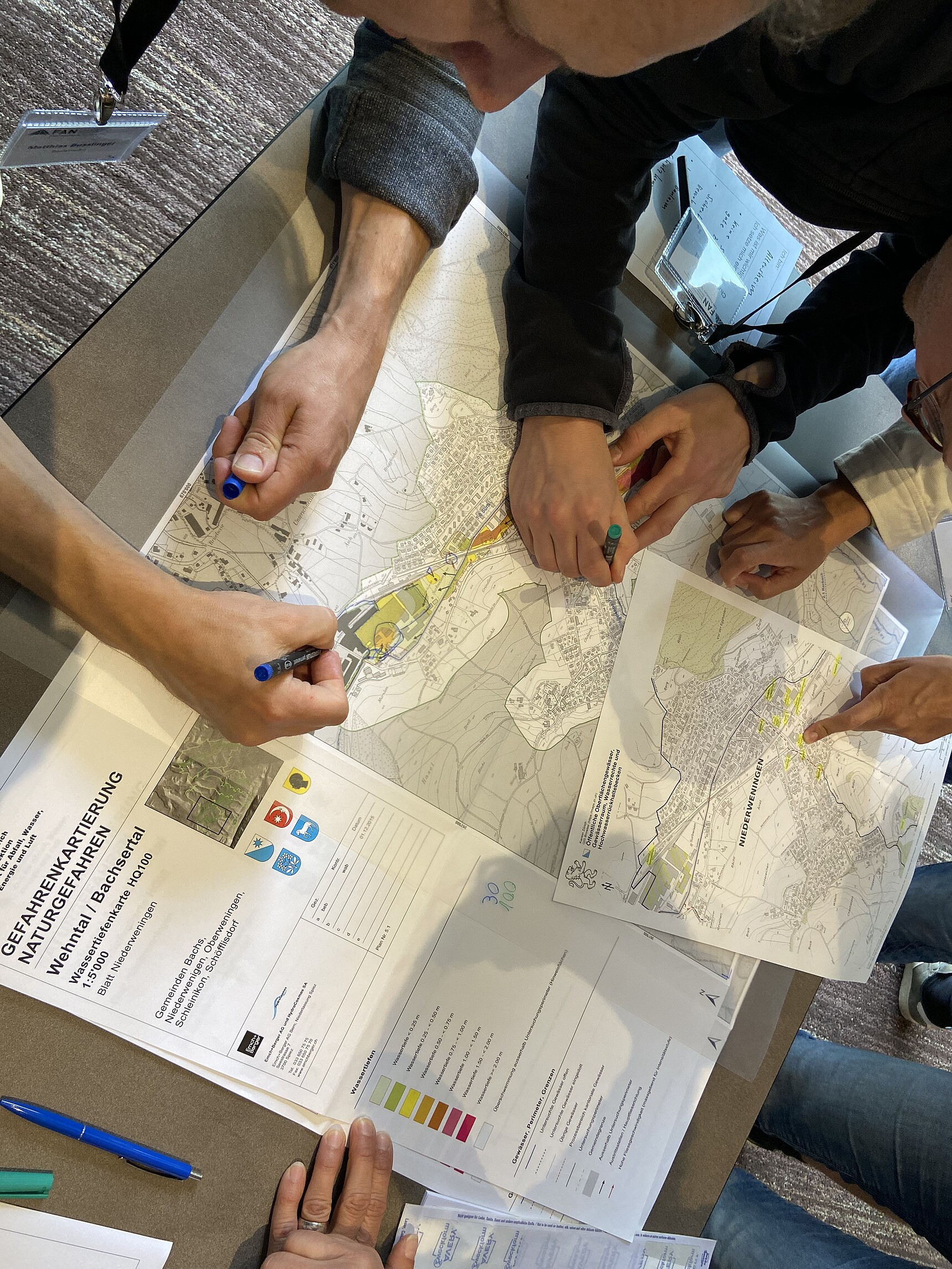Various players play a central role in this:
- The Confederation, cantons and municipalities for the safety of the population and significant material assets;
- Plant operators for their infrastructures;
- Property owners for their properties;
- insurance companies as risk carriers;
- as well as all persons and institutions responsible for another protected good.
With the involvement of all
The concept of integral risk management is widely known and accepted today. What is often lacking, however, is dialogue involving all stakeholders. The individual responsible parties often act independently, uncoordinated and, above all, not together.
Successful integral risk management requires an intensive, early risk dialogue between all those involved: those responsible, the risk takers and those affected. In this process
- all stakeholders are identified and involved at an early stage;
- the needs and objectives are formulated and known to all;
- the appropriate level of safety is defined and the project objectives are jointly determined;
- an optimal solution or combination of measures is jointly developed;
- there is a conscious decision on the remaining risk.
Risk dialogue is a prerequisite for ensuring that measures and remaining risks are widely accepted and can be borne in solidarity.
No equal security
No equal security
PLANAT promotes the understanding that safety is developed jointly, participatively and according to a comparable approach. This requires all those involved - those responsible and those affected - to enter into this process with an open mind and therefore not strive for the same level of safety everywhere. The three questions of the IRM also form the guidelines for this:
What can happen?
What are the risks? The stakeholders gain a common understanding of the existing and future risks.
What is acceptable?
What risks are reasonable and acceptable? The stakeholders assess the risks and derive the desired level of safety from this. The PLANAT safety level recommendations serve as a guide. In a joint process, they determine which risks and impacts are acceptable in a specific case.
Assistance
Assistance for creating appropriate security
In its handbook for participation in hydraulic engineering projects (admin.ch), the federal government shows how participation can be successfully organised with all those involved
The Joint Risk Assessment of Natural Hazards project took place as part of the Adaptation to Climate Change pilot programme. The result was a further training programme for tour guides on accepted risk (RAR).


